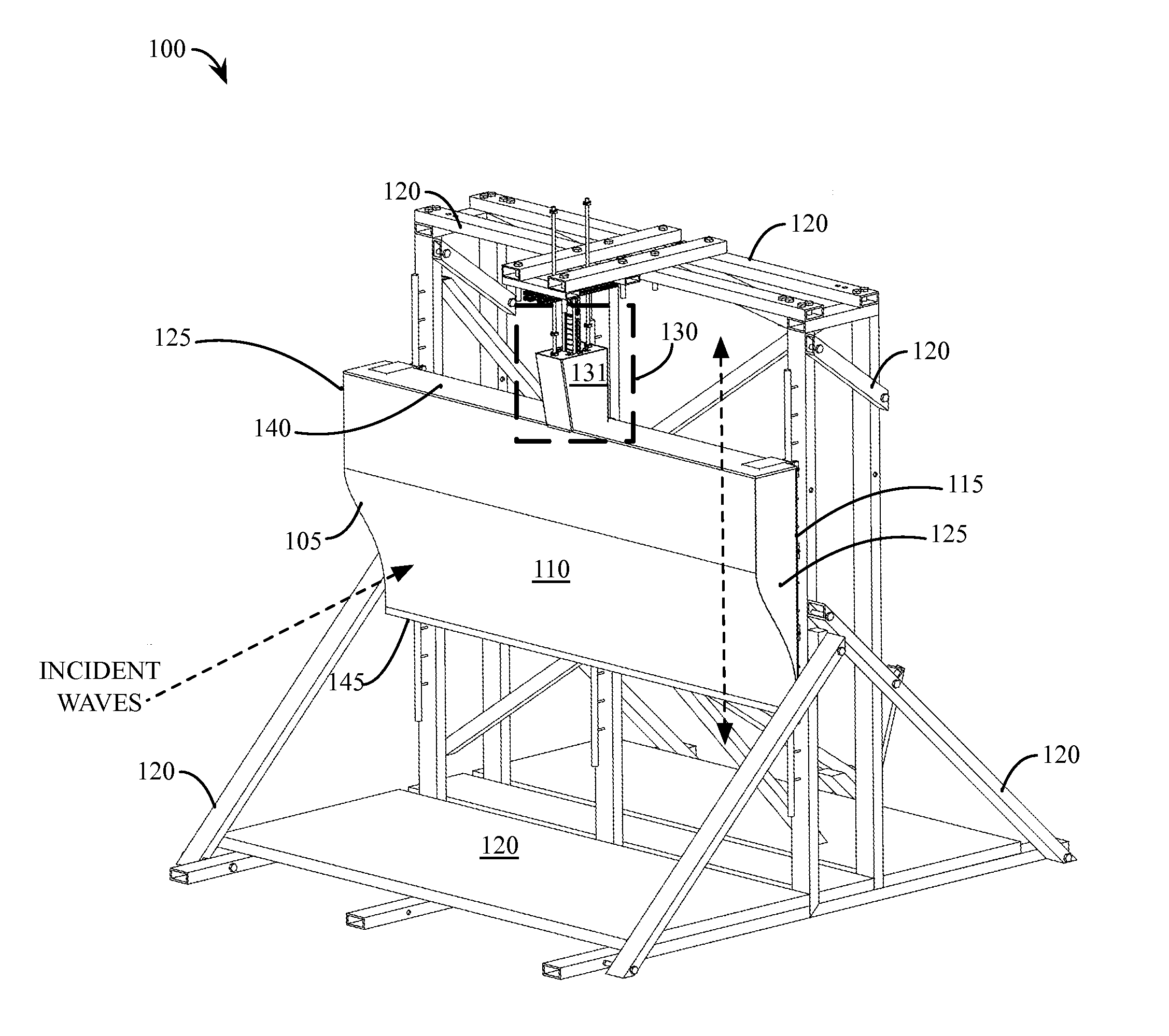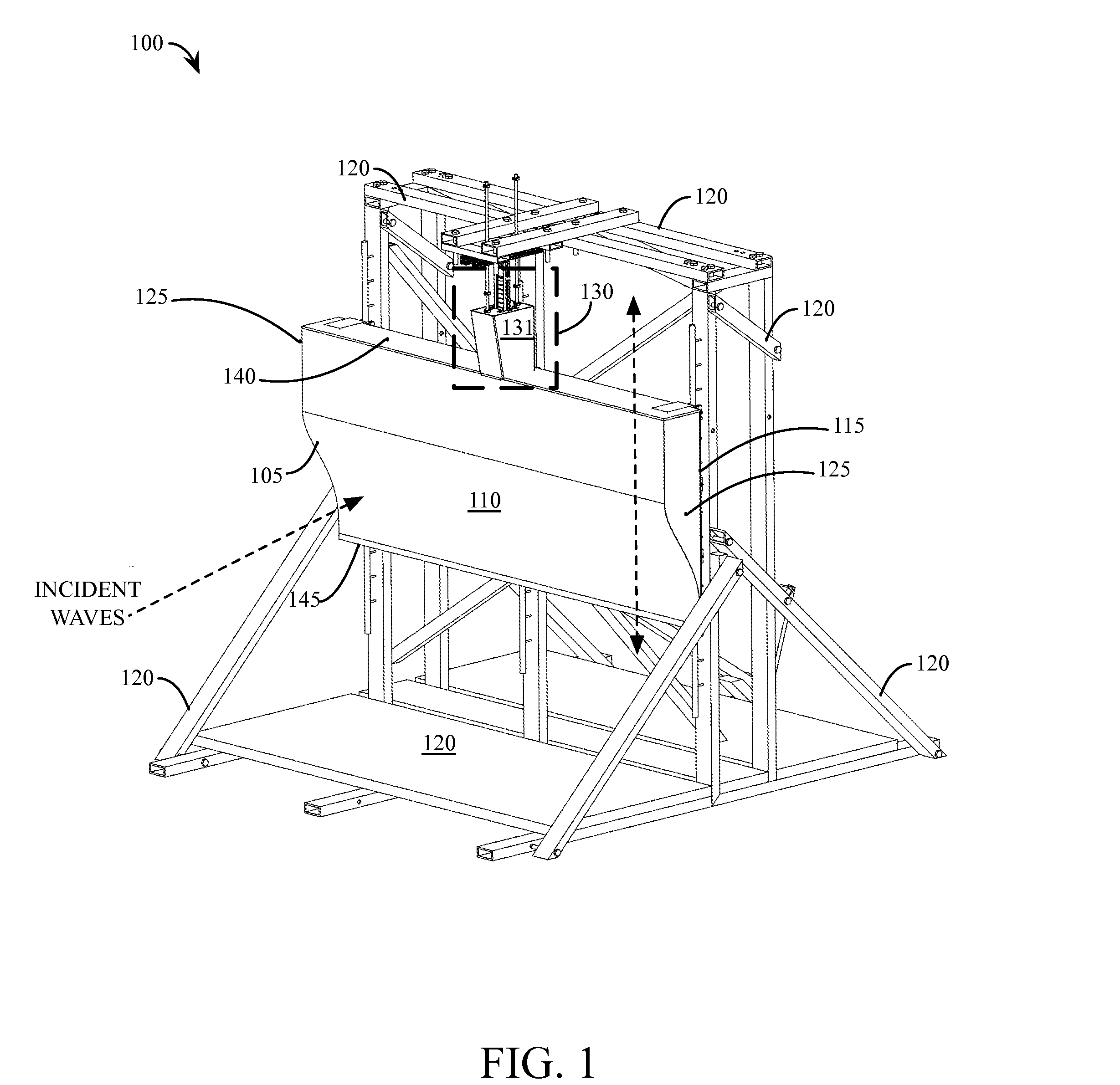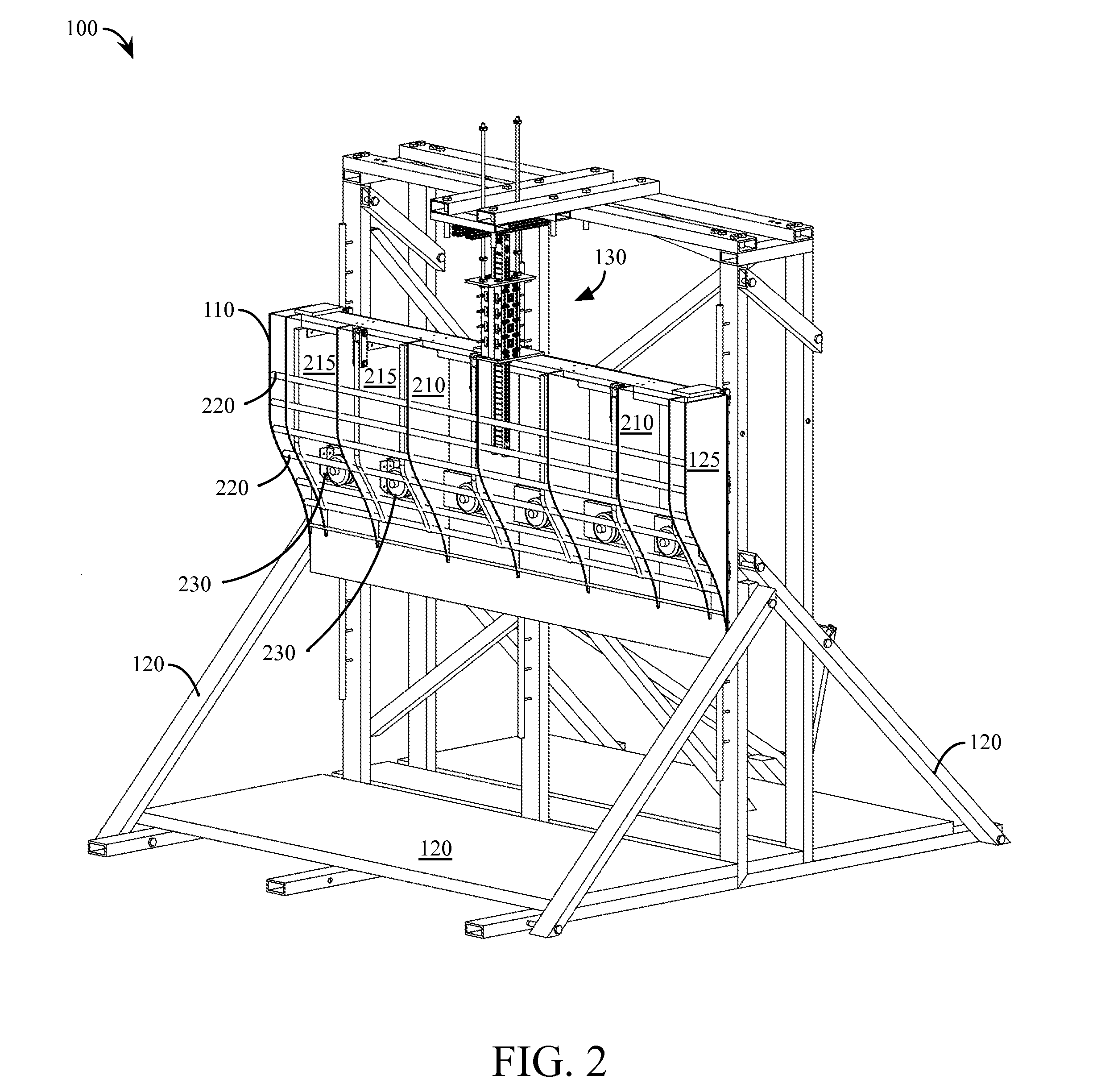Energy-capturing floating breakwater
a technology of energy capture and floating breakwater, which is applied in the direction of mechanical equipment, machines/engines, electric generator control, etc., can solve the problems of inability to large-scale use of wave energy convertors (“wec”) currently being used in the world today, the difficulty of accurately estimating and understanding wave patterns, and the relatively slow (0.1 hz) conversion speed. achieve the effect of 100% efficiency of energy capture, low viscosity, and low cos
- Summary
- Abstract
- Description
- Claims
- Application Information
AI Technical Summary
Benefits of technology
Problems solved by technology
Method used
Image
Examples
Embodiment Construction
[0028]The most preferred embodiments of the present invention comprise the combination of: an asymmetrical floating body designed in accordance with the parameters in Appendix 1; a specially designed guiding structure; and a PMLG-based PTO system. With the most preferred embodiments of the present invention, the damping of the PTO is matched with the radiation damping of the asymmetrical floating body, a shape-dependent hydrodynamic property. When operated at resonance in heave motion, the most preferred embodiments of the present invention are capable of capturing up to 96% of incident-wave energy while simultaneously acting as a breakwater or wave shield, since about only 12.5% of the wave amplitude (or only 1.56% of the energy flux) will be transmitted to the leeward side.
[0029]The most preferred embodiments of the present invention are configured to capture wave energy in a broad range of frequencies. Additionally, certain preferred embodiments of the present invention may be im...
PUM
 Login to View More
Login to View More Abstract
Description
Claims
Application Information
 Login to View More
Login to View More - R&D
- Intellectual Property
- Life Sciences
- Materials
- Tech Scout
- Unparalleled Data Quality
- Higher Quality Content
- 60% Fewer Hallucinations
Browse by: Latest US Patents, China's latest patents, Technical Efficacy Thesaurus, Application Domain, Technology Topic, Popular Technical Reports.
© 2025 PatSnap. All rights reserved.Legal|Privacy policy|Modern Slavery Act Transparency Statement|Sitemap|About US| Contact US: help@patsnap.com



